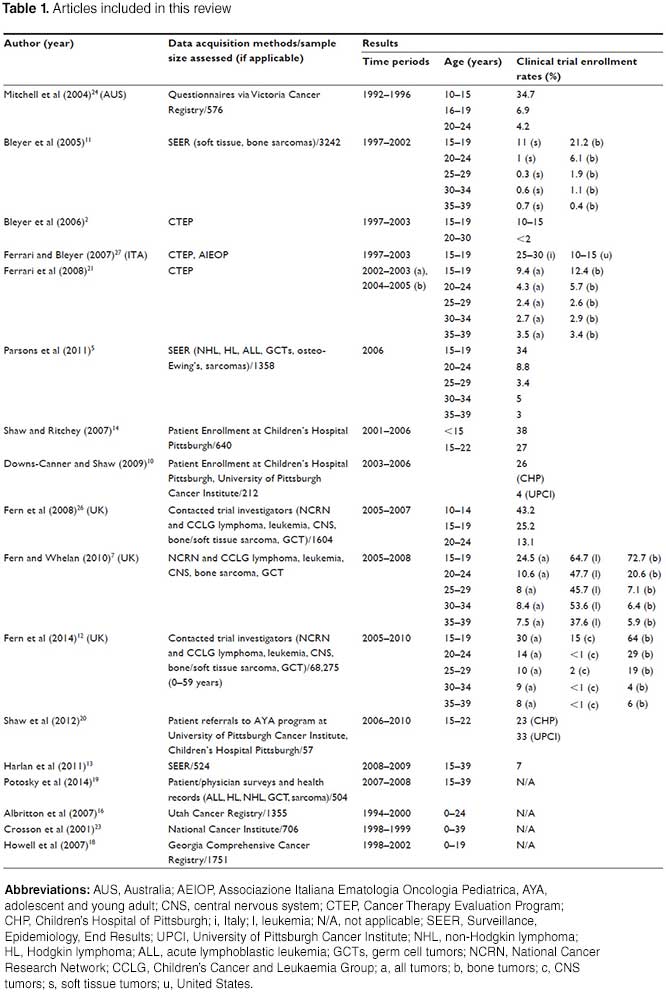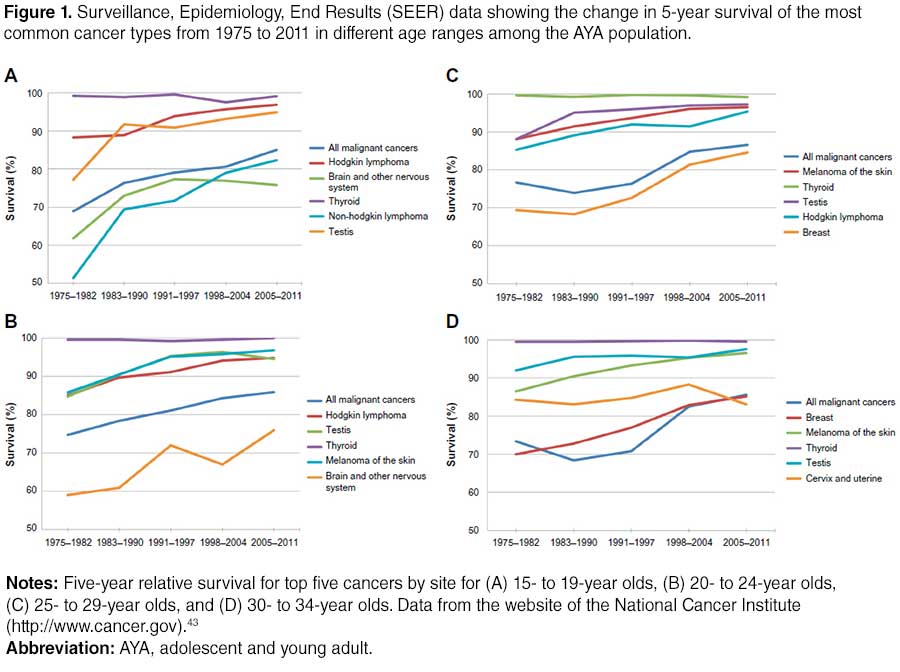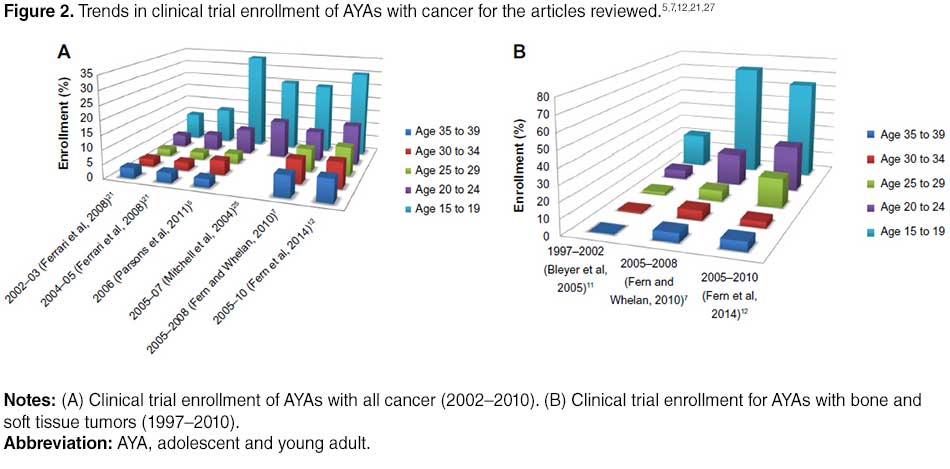METHODS
A medical review of the literature was conducted utilizing the PubMed database, including all peer-reviewed journals. The search terms included the following phrases or keywords: “adolescent and young adult” OR “AYA oncology” OR “teen and young adult oncology” AND “clinical trials” OR “enrollment”. The following selection criteria were applied: articles published from January 1995 to May 2015 and included patients aged 15–39 years who were diagnosed with cancer during this time period. We required that all studies were published in the English language. Outcome variables included the number of clinical trials available to AYA patients and the number of AYA patients enrolled in clinical trials over a given time period. In addition, articles that discussed barriers and facilitators to clinical trial enrollment of AYA patients were selected. The reference list of all articles was manually searched for additional relevant articles. This review included quantitative, qualitative, and mixed methods articles. Articles that met all inclusion criteria were then subject to full-text review.
The methodological quality of the articles was judged using a validated set of guidelines for qualitative research. A reviewer assessed each article for the following items: well-defined aims and objectives, information on data collection and analysis, the context of the study, clear presentation of results, interesting discussion of results, study limitations included, and conclusion summarized the paper and mentioned the importance of further research.8 For quantitative research, articles were judged on the following items: appropriate study design and sample, valid and reliable data collection tools, and proper statistical methods.9 A total of 17 articles met these criteria and were included in this review.
RESULTS
Table 1 shows the methodology and major findings of the reviewed studies. These studies used many different age groupings to define the AYA population. The majority of studies included a range of 15–39 years. Three studies used an upper age limit of 25 years. Sixteen studies used quantitative methods and one study used mixed methods. Most studies (eleven) examined all cancer types. Five studies looked at several common cancer types. One study focused specifically on bone and soft tissue tumors. Twelve studies reported data from the US, four reported data from Europe, and one reported data from Australia.
(To view a larger version of Table 1, click here.)
Of the articles reviewed, 12 showed that compared with children and older adults, enrollment in clinical trials for AYA patients is significantly lower.2,5,10–12 In particular, four studies demonstrated that patients aged 20–39 years were less likely to be enrolled in a clinical trial.2,5,11,12 The AYA Health Outcomes and Patient Experience (HOPE) Study, which has followed 524 AYA patients, reported that only 7% of respondents had participated in a clinical trial.13 Most troubling is that there has been a downward trend in clinical trial enrollment from 1997 to 2003 for patients aged 15–29 years in clinical trials sponsored by the NCI.2
Figure 1 illustrates that overall survival trends are improving for malignant cancers among all age groups in AYAs. However, for certain cancer types, this is not the case. Most concerning is that for both brain tumors and cervical cancer, 5-year survival has actually decreased over time in 15- to 19-year olds and 30- to 34-year olds. Among 20- to 24-year-old participants, survival for patients with testicular cancer appears to have plateaued.
(To view a larger version of Figure 1, click here.)
Figure 2 displays the trends in clinical trial enrollment of AYAs with cancer among the articles reviewed for this paper. Overall, clinical trial enrollment has increased over time in every age group. The enrollment was much higher in 15- to 19-year-old participants when compared with all other age groups. In addition, older age seemed to correlate with lower enrollment in clinical trials.
(To view a larger version of Figure 2, click here.)


